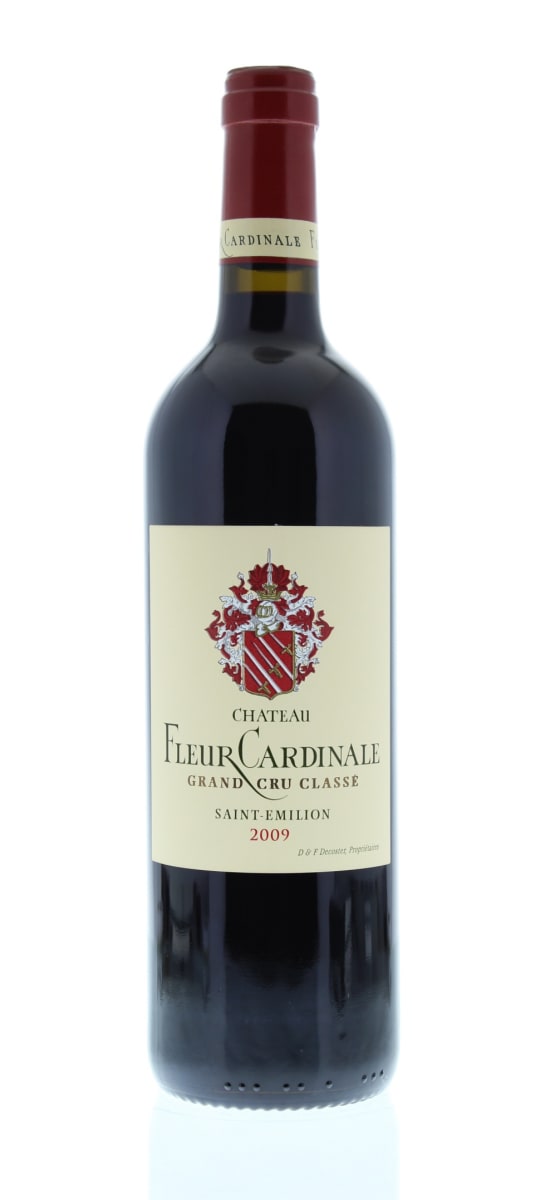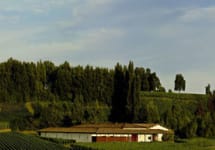Chateau Fleur Cardinale 2009
-
Robert
Parker -
Wine
Spectator -
James
Suckling




Product Details
Your Rating
Somm Note
Winemaker Notes
Professional Ratings
-
Robert Parker's Wine Advocate
A good value among over-achieving St.-Emilion estates is La Fleur Cardinale’s 2009. Composed of 70% Merlot, 20% Cabernet Franc and 10% Cabernet Sauvignon, some of the abrasive tannins noticeable early on in this big wine (14.5% alcohol) are now sweeter and better integrated. Made from tiny yields of 30 hectoliters per hectare, this is a concentrated, rich effort revealing lots of black cherry and black currant fruit as well as a fragrant, firm, full-bodied personality. It should be at its best between 2016 and 2030.
-
Wine Spectator
This delivers the textbook panoply of blueberry, plum and blackberry fruit of the appellation, with a lush, creamy mouthfeel and a long licorice- and sweet toast-filled finish. Along with the suave fruit, there's latent grip that should mellow nicely with midterm cellaring. Best from 2013 through 2023.
-
James Suckling
Wow. Blueberry, minerals, oyster shell and black chocolate aromas. Full body, with velvety tannins and juicy finish. Delicious and succulent. Better in 2018.
Other Vintages
2022-
James
Suckling -
Jeb
Dunnuck - Decanter
- Decanter
-
James
Suckling -
Jeb
Dunnuck -
Robert
Parker -
Wine
Enthusiast
-
James
Suckling -
Robert
Parker - Decanter
-
Jeb
Dunnuck - Vinous
-
James
Suckling -
Jeb
Dunnuck - Decanter
-
Wine
Enthusiast -
Wine
Spectator -
Robert
Parker
-
Wine
Enthusiast -
Robert
Parker -
James
Suckling - Decanter
-
Jeb
Dunnuck -
Wine
Spectator
-
Jeb
Dunnuck -
James
Suckling -
Robert
Parker - Decanter
-
Wine
Enthusiast -
Wine
Spectator
-
James
Suckling -
Jeb
Dunnuck -
Wine
Spectator -
Robert
Parker - Decanter
-
James
Suckling -
Wine
Spectator -
Robert
Parker
-
Robert
Parker -
Wine
Spectator -
James
Suckling
-
Robert
Parker -
Wine
Enthusiast -
James
Suckling -
Wine
Spectator
-
Robert
Parker -
Wine
Spectator -
James
Suckling
-
Robert
Parker -
Wine
Spectator


With it's great value for money, and showing great consistancy in it's quality, Chateau Fleur Cardinale was promoted to "Saint-Emilion Grand cru classé" in 2006.

One of the world’s most classic and popular styles of red wine, Bordeaux-inspired blends have spread from their homeland in France to nearly every corner of the New World. Typically based on either Cabernet Sauvignon or Merlot and supported by Cabernet Franc, Malbec and Petit Verdot, the best of these are densely hued, fragrant, full of fruit and boast a structure that begs for cellar time. Somm Secret—Blends from Bordeaux are generally earthier compared to those from the New World, which tend to be fruit-dominant.

Marked by its historic fortified village—perhaps the prettiest in all of Bordeaux, the St-Émilion appellation, along with its neighboring village of Pomerol, are leaders in quality on the Right Bank of Bordeaux. These Merlot-dominant red wines (complemented by various amounts of Cabernet Franc and/or Cabernet Sauvignon) remain some of the most admired and collected wines of the world.
St-Émilion has the longest history in wine production in Bordeaux—longer than the Left Bank—dating back to an 8th century monk named Saint Émilion who became a hermit in one of the many limestone caves scattered throughout the area.
Today St-Émilion is made up of hundreds of independent farmers dedicated to the same thing: growing Merlot and Cabernet Franc (and tiny amounts of Cabernet Sauvignon). While always roughly the same blend, the wines of St-Émilion vary considerably depending on the soil upon which they are grown—and the soils do vary considerably throughout the region.
The chateaux with the highest classification (Premier Grand Cru Classés) are on gravel-rich soils or steep, clay-limestone hillsides. There are only four given the highest rank, called Premier Grand Cru Classés A (Chateau Cheval Blanc, Ausone, Angélus, Pavie) and 14 are Premier Grand Cru Classés B. Much of the rest of the vineyards in the appellation are on flatter land where the soils are a mix of gravel, sand and alluvial matter.
Great wines from St-Émilion will be deep in color, and might have characteristics of blackberry liqueur, black raspberry, licorice, chocolate, grilled meat, earth or truffles. They will be bold, layered and lush.
